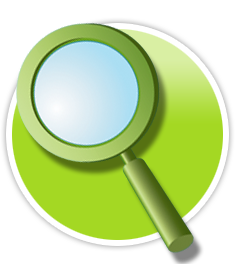Colección herpetológica del instituto de ecología y sistemática, la Habana, Cuba. Familia dipsadidae, géneros caraiba y tretanorhinus; familia natricidae, género nerodia
Colección herpetológica del instituto de ecología y sistemática, la Habana, Cuba. Familia dipsadidae, géneros caraiba y tretanorhinus; familia natricidae, género nerodia
Contenido principal del artículo
Resumen
Se realizó el inventario físico de las serpientes de los géneros Caraiba, Tretanorhinus y Nerodia presentes en la colección herpetológica del Instituto de Ecología y Sistemática, La Habana, Cuba. Se detectaron errores en números de etiquetas y tarjetas repetidas o faltantes. A partir de arreglar los errores se confeccionaron 61 tarjetas y 88 etiquetas nuevas; se catalogaron 61 ejemplares; se introdujeron 74 registros nuevos en hojas de Excel; se preparó el catálogo en procesador de texto y soporte digital. Se detectaron las seis subespecies del género Caraiba, con 220 ejemplares recolectados en las 15 provincias y el municipio especial Isla de la Juventud; las provincias que tienen mayor número son La Habana y Pinar del Río. Del género Tretanorhinus se encontraron tres de las cuatro subespecies cubanas con 62 ejemplares capturados en 7 de las 15 provincias y en el municipio especial Isla de la Juventud; las provincias de mayor número de ejemplares son Artemisa y Matanzas y las de menor número, Villa Clara y Ciego de Ávila. Nerodia clarkii está presente con 20 especímenes de 6 de las 15 provincias. Sancti Spíritus es la provincia de mayor número de capturas. Los recolectores que han aportado más ejemplares de los tres géneros son Luis V. Moreno (66), Julio Novo (42), Orlando H. Garrido (31) y Miguel L. Jaume (24). La etapa en que ha habido mayor número de recolectas es la de 1960 a 1969 (122), seguida de la de 1970 a 1989 (98) y la de menor, entre el año 2000 y el presente (13
Descargas
Datos de publicación
Perfil evaluadores/as N/D
Declaraciones de autoría
- Sociedad académica
- Universidad de Sucre
- Editorial
- Universidad de Sucre
Detalles del artículo
Referencias / Ver
BAIRD, S. F.; GIRARD C. 1853. Catalogue of North American Reptiles in the Museum of the Smithsonian Institution. Part I.- Serpents. Smithsonian Institution, Washington.
BARBOUR, T. 1916. The reptiles and amphibians of the Isle of Pines. Annals of the Carnegie Museum 10(2):297-308.
BARBOUR, T. 1937. Third list of Antillean reptiles and amphibians. Bulletin of the Museum of Comparative Zoology 82(2):77-166.
BARBOUR, T.; RAMSDEN C. 1919. The herpetology of Cuba. Memoirs of the Museum of Comparative. Zoology 47(2):71-213.
BONAPARTE, C. L. J. L. 1840. Amphibia europea ad systema nostrum vertebratorum ordinata. Estr. da: Memorie della R. Accademia delle Scienze di Torino, S. 2., tomo 2. 72 pp.
CHAMIZO LARA, A. R.; MORENO GARCÍA, L. V.; RODRÍGUEZ SCHETTINO, L. 2005. Holotypes of reptiles in the herpetological collection of the Institute of Ecology and Systematics, Cuba. Smithsonian Herpetological Information Service 135:1-10.
COPE, E. D. 1887. On a new species of Tropidonotus found in Washington. Proceedings of the US National Museum 10:146.
DUMÉRIL, A. M. C.; BIBRON, G. 1854. Erpétologie Générale ou Histoire Naturelle Complete des Reptiles, 7. Libraire Encyclopédique de Roret, Paris, xiii + 780 pp.
GACETA OFICIAL DE LA REPÚBLICA DE CUBA. 2010. Gaceta Oficial No. 23:139-140.
GARMAN, S. 1887. On West Indian Iguanidae and on West Indian Scincidae. Bulletin of the Essex Institute 19:1-29.
GARRIDO, O. H. 1973. Nuevas subespecies de reptiles para Cuba. Torreia 30:1-31.
GONZÁLEZ ALONSO, H.; SILVA TABOADA, G.; GARCÍA RODRÍGUEZ, N.; PÉREZ GONZÁLEZ, A. 2008. Procedimiento curatorial para colecciones zoológicas. Acta Botánica Cubana 202:13-29.
GRANT, C. 1941. The herpetology of the Cayman Islands. Bulletin of the Institute of Jamaica, Scientific Series 2:iv + 65 pp.
GUNDLACH, J. C. 1861. Hrn. W. Peters legte eine Mittheilung vor über zweig neue von Hrn. Dr. Gundlach auf Cuba entdeckte Schlangen, Tropidonotus cubanus and Cryptodacus vittatus. Akademie der Wissenschaften zur Berlin 1861:1001-1004.
HEDGES, S. B. 1996. The origin of West Indian amphibians and reptiles. En Contributions to West Indian herpetology: a tribute to Albert Schwartz (R. Powell y R. W. Henderson, eds.), SSAR, New York. Contributions to Herpetology 12:95-128.
HEDGES, S. B.; COULOUX, A.; VIDAL, N. 2009. Molecular phylogeny, classification, and biogeography of West Indian racer snakes of the Tribe Alsophiini (Squamata, Dipsadidae, Xenodontinae). Zootaxa 2067:1-28.
HENDERSON, R. W.; POWELL, R. 2009. Natural History of West Indian Reptiles and Amphibians. University Press of Florida, Gainesville, xxiv + 496 pp.
JAN, G. 1863. Elenco sistematico degli Ofidi descritti e disegnati per l'Iconografia Generale. vii + 143 pp. A. Lombardi, Milán. + Enumerazione sistematica degli ofidi appartenenti al gruppo Coronellidae. Archivos Zoology, Anatonomy e Fisiology 2(2):215-330.
KENICOTT, R. 1860. Descriptions of new species of North American serpents in the Museum of the Smithsonian Institution, Washington. Proceedings of the Academy of Natural Sciences of Philadelphia 12:328-338.









